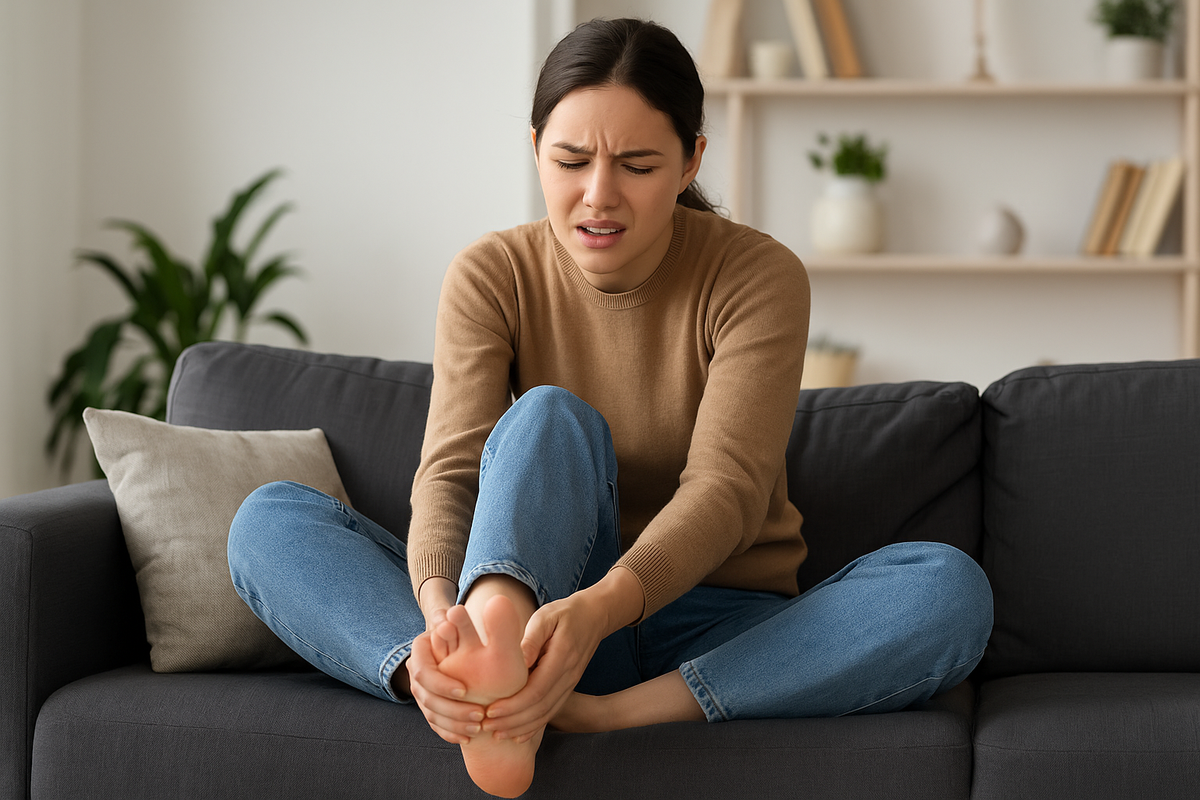May 06, 2025
Understanding Different Types of Foot Pain
By Gdefy

Summary
Understanding Different Types of Foot Pain
Foot pain is a common complaint that can affect people of all ages. The human foot is a complex structure made up of bones, muscles, tendons, and ligaments. Due to its complexity and the constant pressure it endures, the foot is susceptible to various types of pain and ailments. Understanding the different types of foot pain and their causes can help you take the appropriate steps for relief and treatment.

Common Causes of Foot Pain
Foot pain can stem from numerous sources, ranging from minor injuries to serious health conditions. Here, we will discuss some common causes of foot pain.
1. Plantar Fasciitis
Plantar fasciitis is one of the most common causes of heel pain. It involves inflammation of the plantar fascia, a thick band of tissue that runs across the bottom of the foot and connects the heel bone to the toes. This condition often causes stabbing pain that usually occurs with the first steps in the morning.
2. Bunions
Bunions are bony bumps that form at the base of the big toe. They occur when some of the bones in the front part of the foot move out of place, causing the tip of the big toe to get pulled toward the smaller toes and forcing the joint at the base of the big toe to stick out. This can lead to swelling, redness, and soreness.
3. Gout
Gout is a form of arthritis characterized by sudden and severe pain, redness, and tenderness in joints. It often affects the joint at the base of the big toe. Gout occurs when urate crystals accumulate in the joint, causing inflammation and intense pain.
4. Morton's Neuroma
Morton's neuroma is a painful condition that affects the ball of your foot, most commonly the area between your third and fourth toes. It involves a thickening of the tissue around one of the nerves leading to your toes. This can cause a sharp, burning pain in the ball of the foot and a feeling of having a pebble in your shoe.
5. Flat Feet
Flat feet, or fallen arches, occur when the arches of the feet flatten, allowing the entire sole of the foot to touch the floor when standing. This can lead to pain in the feet, ankles, and knees due to altered alignment of the legs.
Toe Pain and Its Causes
Toe pain can be particularly bothersome since it can interfere with walking and other activities. Several conditions can cause toe pain.
1. Ingrown Toenails
An ingrown toenail occurs when the edge of a toenail grows into the skin of the toe. This can cause pain, redness, and swelling and may lead to infection if not treated properly. Ingrown toenails are most common in the big toe.
2. Hammertoes
Hammertoe is a deformity that causes the toe to bend or curl downward instead of pointing forward. It usually affects the second, third, or fourth toes. Hammertoes can cause pain and lead to the development of corns or calluses on top of the toe joint.
3. Toe Fractures
Toe fractures are breaks in the bones of the toe. They can result from trauma, such as stubbing your toe or dropping something heavy on it. Fractures can cause pain, swelling, and bruising.
4. Arthritis
Arthritis can affect the toes just like any other joint in the body. It can cause pain, stiffness, and swelling in the toe joints. Osteoarthritis and rheumatoid arthritis are common types of arthritis that can affect the toes.
How to Ease Foot and Toe Pain
There are several measures you can take to ease foot and toe pain at home, depending on the cause.
Rest and Ice
For many types of foot pain, resting the foot and applying ice can help reduce swelling and relieve pain. Try to keep weight off the affected foot and ice the area for 15-20 minutes several times a day.
Proper Footwear
Wearing proper footwear that provides adequate support and cushioning can help alleviate foot pain. Avoid high heels and shoes with narrow toe boxes. Instead, opt for shoes with a wide toe box and good arch support.
Stretching and Strengthening Exercises
Regular stretching and strengthening exercises can help improve flexibility and strength in the feet and prevent pain. Stretch the Achilles tendon, calf muscles, and the plantar fascia to maintain flexibility.
Over-the-Counter Pain Relief
Nonsteroidal anti-inflammatory drugs (NSAIDs) such as ibuprofen can help relieve pain and reduce inflammation. Always follow the recommended dosage and consult with a healthcare provider if you have any concerns.
When to See a Doctor
While many foot and toe pain issues can be managed at home, there are times when it is important to seek medical attention. If you experience severe pain, swelling, or signs of infection, such as redness and warmth, consult a doctor. Additionally, if your foot pain does not improve with home treatment, a healthcare professional can provide a proper diagnosis and recommend further treatment options.
Conclusion
Foot pain is a common but often overlooked issue that can significantly impact daily life. Understanding the different types of foot pain and their causes can help you take the necessary steps to alleviate discomfort and prevent future issues. If you are experiencing persistent foot pain, do not hesitate to reach out to a healthcare provider for guidance and treatment. By addressing foot pain early, you can maintain your mobility and continue to enjoy an active lifestyle.
















































































































































































